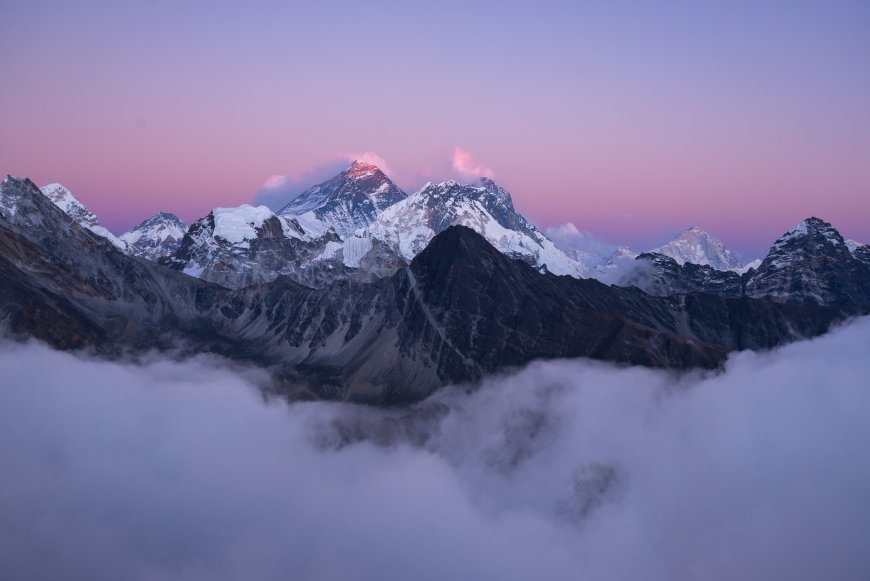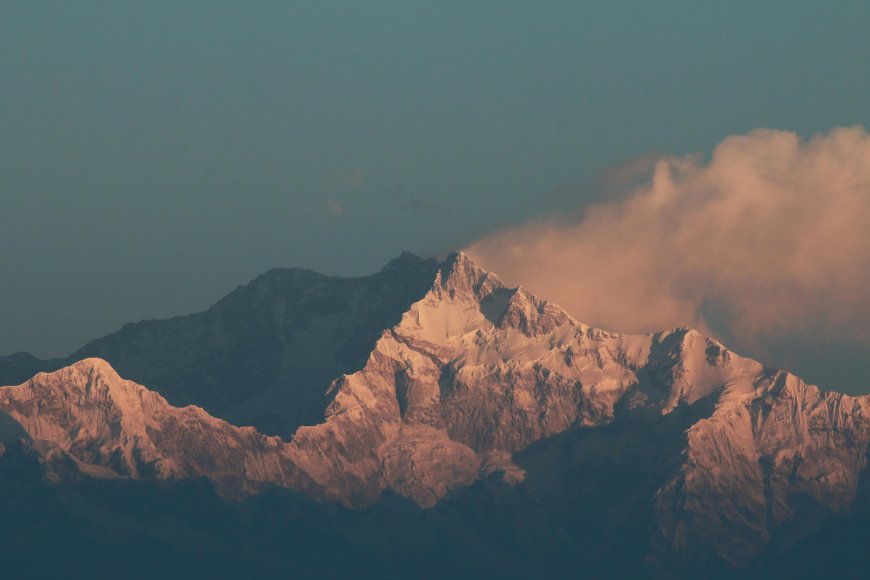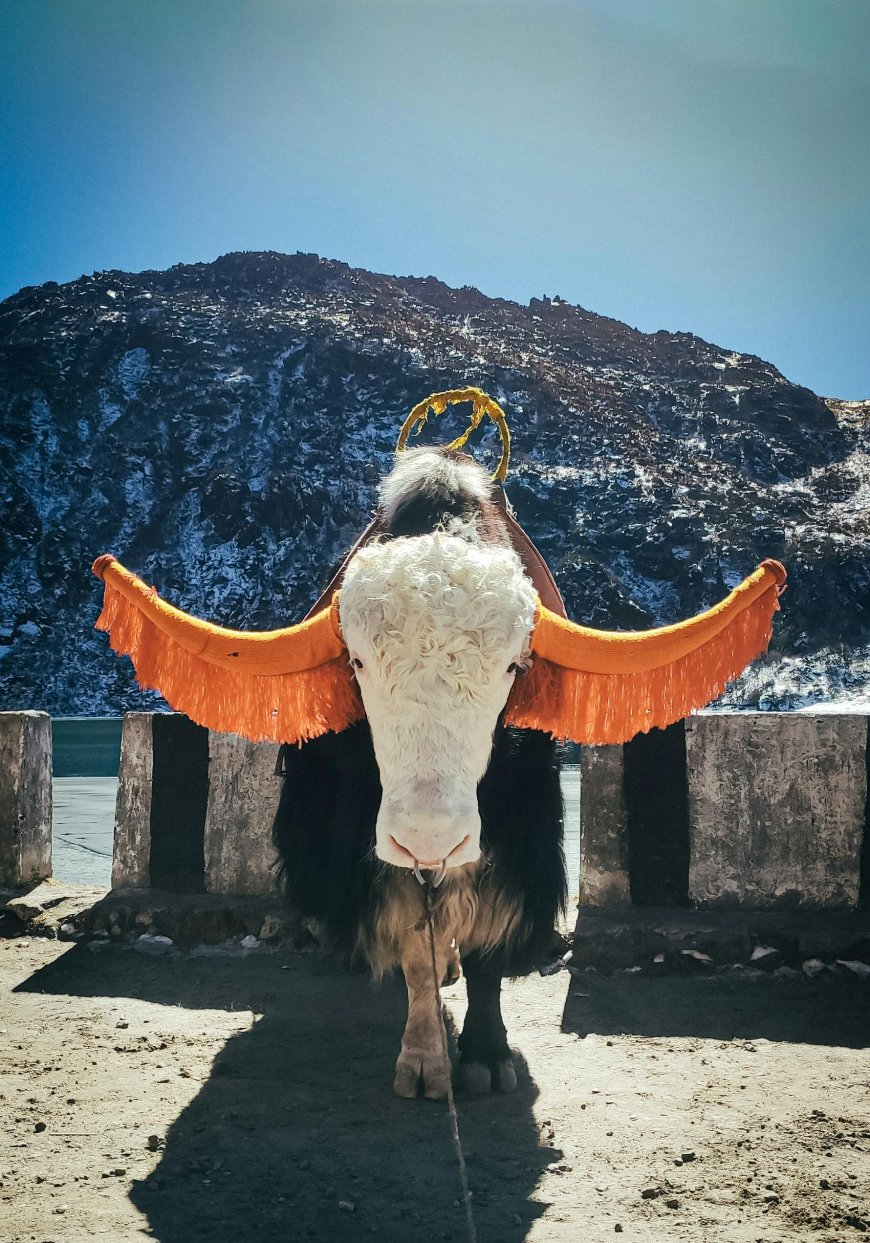Exploring Sikkim: from NJP with Sightseeing, Culture, and Culinary Delights
Nestled in the heart of the Himalayas, Sikkim is a paradise of stunning landscapes, vibrant culture, and spiritual serenity. This 5-day itinerary will help you explore the best of Sikkim, offering breathtaking views, visits to iconic monasteries, and a delicious taste of local cuisine. Let’s begin your unforgettable journey!
Sikkim 5-Day Tour Itinerary from NJP
| Day | Activities | Details | Cost Estimate |
|---|---|---|---|
| Day 1 | Arrival at NJP & Transfer to Gangtok | - Arrive at NJP Railway Station.- Travel to Gangtok (4-5 hrs drive via Teesta River).- Explore MG Marg in the evening. | - Private cab: ₹3,500–₹4,500- Shared vehicle: ₹400–₹600 per person |
| Day 2 | Gangtok Sightseeing – Part 1 | - Visit Tsomgo Lake & Baba Mandir.- Enjoy lunch with Thukpa or Momos.- Evening at MG Marg for shopping and local food. | - Taxi for the day: ₹4,000–₹5,000 |
| Day 3 | Gangtok Sightseeing – Part 2 | - Visit Rumtek Monastery, Banjhakri Falls, and Do Drul Chorten.- Evening leisure time at MG Marg. | - Taxi for the day: ₹2,500–₹3,500 |
| Day 4 | Excursion to Namchi & Ravangla | - Visit Char Dham in Namchi.- Explore Buddha Park in Ravangla.- Try Dal Bhat for lunch. | - Private cab: ₹4,000–₹5,500 |
| Day 5 | Departure from Gangtok to NJP | - Check-out and travel back to NJP.- Breakfast with Sha Phaley or Sishnu. | - Private cab: ₹3,500–₹4,500- Shared vehicle: ₹400–₹600 per person |
How to Arrive in Sikkim
| Mode of Transport | Details | Major Points of Arrival | Travel Time |
|---|---|---|---|
| By Air | The nearest airport to Sikkim is Bagdogra Airport (IXB), located about 124 km from Gangtok. | - Bagdogra Airport (IXB) | - Flight from Kolkata (1 hour 40 minutes)- From Delhi or Mumbai (around 2-3 hours) |
| By Train | The nearest major railway station is New Jalpaiguri Railway Station (NJP), about 120 km from Gangtok. | - New Jalpaiguri Railway Station (NJP) | - From Kolkata: 18-20 hours by train- From Delhi: 24-30 hours by train |
| By Road | Sikkim is well-connected by road from West Bengal, Darjeeling, and Bhutan. | - Taxis, buses, and private vehicles are available from NJP Railway Station or Bagdogra Airport to Gangtok. | - From NJP to Gangtok: 4-5 hours (120 km)- From Bagdogra to Gangtok: 4-5 hours (124 km) |
| By Shared Vehicle | Shared cabs are a popular and economical way to travel to Sikkim. They are available from NJP or Bagdogra. | - Shared cabs to Gangtok and other destinations in Sikkim | - Shared vehicles take around 5-6 hours for the journey from NJP/Bagdogra to Gangtok |
-
By Air: Bagdogra is the most convenient airport for Sikkim, with regular flights from major Indian cities.
-
By Train: NJP is the closest railway station, and you can hire a taxi or take a shared vehicle from there to reach Gangtok or other towns in Sikkim.
-
By Road: The roads to Sikkim are scenic but winding. Be prepared for a bumpy ride and carry some snacks for the journey.

Day 1: Arrival at NJP and Transfer to Gangtok
-
Arrival at NJP Railway Station: Begin your journey at the New Jalpaiguri Railway Station, the nearest railhead to Sikkim.
-
Transportation: You can hire a private cab (₹3,500–₹4,500) or opt for a shared vehicle (₹400–₹600 per person) to Gangtok.
-
Journey: The 4-5 hour drive offers spectacular views of the Teesta River and the surrounding hills.
-
Evening at MG Marg: Check into your hotel and then take a leisurely stroll around MG Marg, the vibrant heart of Gangtok, filled with shops, cafes, and restaurants.
-
Dinner: Try traditional Sikkimese dishes like Phagshapa (pork dish) or Gundruk (fermented leafy vegetable).
Day 2: Gangtok Sightseeing – Part 1
-
Tsomgo Lake & Baba Mandir: Start your day with a visit to the serene Tsomgo Lake, located at an altitude of 3,753 meters, followed by the sacred Baba Mandir.
-
Transport: Hire a local taxi for a day tour (₹4,000–₹5,000).
-
Lunch: Enjoy a hearty bowl of Thukpa (Tibetan noodle soup) or some hot and delicious Momos at a local eatery.
-
Evening: Spend your evening at MG Marg, where you can shop for souvenirs or relax at one of the cafes.
Day 3: Gangtok Sightseeing – Part 2
-
Rumtek Monastery: Visit the beautiful and peaceful Rumtek Monastery, one of the most significant monasteries in Sikkim.
-
Banjhakri Falls & Do Drul Chorten: Explore the lush greenery around Banjhakri Falls, followed by a visit to Do Drul Chorten, an important Buddhist stupa.
-
Transport: Continue using your hired taxi from the previous day or book a new one (₹2,500–₹3,500).
-
Evening: Return to MG Marg for some downtime to unwind and enjoy local snacks.
Day 4: Excursion to Namchi and Ravangla
-
Namchi: Head to Namchi, a charming town known for its Char Dham, where you’ll find replicas of India’s four sacred Dhams.
-
Ravangla: Visit Buddha Park in Ravangla, home to a towering statue of Lord Buddha that offers panoramic views of the surrounding hills.
-
Transport: Hire a private cab for the day (₹4,000–₹5,500).
-
Lunch: Relish a traditional Sikkimese Dal Bhat (lentils and rice) meal in either Namchi or Ravangla.
Day 5: Departure from Gangtok to NJP
-
Check-out: After a fulfilling breakfast, check out from your hotel.
-
Breakfast: Savor Sha Phaley (deep-fried stuffed bread) or Sishnu (nettle soup), both popular Sikkimese breakfast options.
-
Return Journey: Travel back to NJP for your onward journey.
-
Transport: Choose between a private cab (₹3,500–₹4,500) or a shared vehicle (₹400–₹600 per person).
-
Best Time to Visit Sikkim
| Season | Time Period | Weather | Highlights | Activities |
|---|---|---|---|---|
| Spring | March to May | - Pleasant temperatures (10°C to 25°C)- Clear skies and blooming flowers | - Rhododendrons and orchids in full bloom- Ideal for sightseeing and outdoor activities | - Trekking- Monastery visits- River rafting |
| Summer | June to August | - Warm days, cool evenings (15°C to 22°C)- Light rainfall towards the end of season | - Lush greenery- Vibrant festivals | - Nature walks- Exploring hill stations- Visit Tsomgo Lake |
| Monsoon | June to September | - Heavy rainfall (15°C to 18°C)- Humid and misty | - Lush landscapes- Fewer tourists | - Not recommended due to landslides- Best avoided for long excursions |
| Autumn | October to November | - Crisp, cool weather (10°C to 20°C)- Clear skies | - Best time for trekking and sightseeing- Great views of Kanchenjunga | - Trekking- Adventure sports- Photography |
| Winter | December to February | - Cold weather (0°C to 10°C)- Snowfall in higher altitudes | - Snow-capped mountains- Winter festivals | - Snow trekking- Visit Nathu La and Yumthang Valley- Hot springs |
Do’s and Don’ts in Sikkim
Do’s:
-
Respect Local Culture: Sikkim has a rich cultural diversity, so always respect local traditions, customs, and rituals, especially in monasteries.
-
Dress Modestly: When visiting religious sites or monasteries, cover your shoulders and knees as a sign of respect.
-
Carry Valid Identification: Since Sikkim is a protected area, carry your ID, and for some areas (like Nathula), you might need a permit.
-
Use Eco-friendly Products: Sikkim is known for its pristine environment. Use eco-friendly products like reusable water bottles, and avoid plastic bags.
-
Enjoy Local Cuisine: Sikkim has a unique blend of Tibetan, Nepali, and Bhutia cuisines. Don't miss trying Momos, Thukpa, and Phagshapa.
-
Hire Local Guides: If you're heading to remote areas or trekking, it’s a good idea to hire local guides for safety and a richer experience.
-
Respect Nature: Keep the environment clean. Avoid littering and stick to designated pathways, especially during treks or while visiting remote sites.
Don’ts:
-
Don’t Litter: Sikkim has strict regulations about cleanliness. Avoid throwing garbage, especially in natural areas or public places.
-
Don’t Smoke or Drink in Public: Public consumption of alcohol and smoking in public spaces is prohibited in many places in Sikkim.
-
Don’t Disturb Wildlife: Do not feed or disturb the local wildlife or birds, especially in national parks or reserved areas.
-
Don’t Venture Without Permits: Some places in Sikkim, like Nathu La or Yumthang, require permits for tourists. Ensure you have the necessary permits before traveling.
-
Don’t Take Photos in Restricted Areas: Always ask for permission before taking photos, especially inside monasteries or during religious ceremonies.
-
Don’t Rely on ATMs in Remote Areas: ATMs are limited in remote areas, so ensure you carry enough cash, especially for areas outside of Gangtok.
Sikkim Permits
| Permit Type | Required For | Details | Cost |
|---|---|---|---|
| Inner Line Permit (ILP) | Foreign Nationals | Foreigners require an Inner Line Permit (ILP) to visit restricted areas of Sikkim like North Sikkim, Nathu La, and others. ILP is issued by the Sikkim Tourism Department or Indian missions abroad. | ₹100–₹200 (approx.) |
| Protected Area Permit (PAP) | Foreign Nationals | For visiting areas such as Nathu La, Tsomgo Lake, and other high-altitude places, foreigners need this permit. Permits are issued by the Sikkim Tourism Department. | ₹400–₹600 (approx.) |
| Sikkim Tourist Permit | Indian Nationals | Indian nationals do not need an ILP for most areas of Sikkim, but for restricted areas like Nathu La and Yumthang, they will need a tourist permit, which is easily obtainable at Gangtok's tourism office or through travel agencies. | Free to ₹200 (depending on the area) |
| Nathu La Permit | All Tourists (Indian & Foreign) | Specific to visiting Nathu La, this permit is needed even for Indian nationals. The permit can be obtained via a registered travel agency in Gangtok. | ₹250–₹500 |
| Yumthang Valley Permit | All Tourists (Indian & Foreign) | Required for visiting the Yumthang Valley and other areas in North Sikkim. | ₹100–₹200 (approx.) |
Important Notes:
-
Where to Apply: Permits are available at the Sikkim Tourism office in Gangtok. Foreign nationals may also apply through travel agencies in Gangtok for more convenience.
-
How to Apply: For Indian nationals, the permits can usually be arranged within a day. Foreign nationals need to apply in advance or through a registered agency.
-
Travel Agency Assistance: It’s often easier and more convenient to get permits through a local travel agency, especially for restricted areas.
Things to Carry for Your Trip to Sikkim
| Essential Items | Details |
|---|---|
| Clothing | - Warm clothes (even in summer, especially in higher altitudes)- Comfortable trekking shoes- Light raincoat or umbrella (rain is frequent in the monsoon) |
| ID & Permits | - Valid government ID (for Indian tourists)- Permits for restricted areas (Nathu La, Yumthang, etc.) |
| Medications | - Personal medications- A small first-aid kit (band-aids, antiseptic cream, painkillers, etc.) |
| Sunscreen & Sunglasses | - Sunscreen (protects from strong mountain sun)- Sunglasses (to protect eyes from the bright sun and snow glare in higher altitudes) |
| Camera/Smartphone | - Camera to capture the stunning landscapes (but avoid photography in restricted areas) |
| Water Bottle | - A reusable water bottle to stay hydrated (avoid plastic bottles for eco-friendliness) |
| Snacks | - Energy bars, dry fruits, and light snacks for treks or long drives |
| Power Bank | - Charging facilities may be limited in remote areas, so carry a power bank for your devices |
| Cash | - Carry sufficient cash, especially for remote areas where ATMs may not be easily available |
| Backpack | - A sturdy backpack for carrying your essentials during the day trips and excursions |
Additional Tips:
-
Altitude Awareness: If you're traveling to higher altitudes, like Tsomgo Lake or Nathula, be aware of altitude sickness. Carry some Diamox (after consulting a doctor) and take it easy the first day.
-
Travel Insurance: It’s advisable to have travel insurance, especially if you plan to trek or visit remote areas.
-
Weather Check: Check the weather forecast before your trip, as weather in the mountains can be unpredictable, and plan accordingly.











